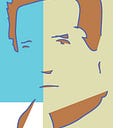Pierce — As someone who writes about what you call oscillatory metamodernism I appreciate your summary.
Coming up with the best language to distinguish this sense of the term from the sense used by the Nordic Ideology authors is tricky. One I’m becoming comfortable with is epistemic metamodernism vs. ideological metamodernism. It’s awkward because we were using the term for a while before the developmental/Nordic/ideological folks adopted it and re-construed it. (A lot of scholars who write about metamodernism as an episteme or cultural sensibility are only vaguely aware, if at all, of the narrower, doctrinal application put forth by the authors who writer under the pseudonym “Hanzi Freinacht.”)
With that out of the way, I wanted to address an interesting intersection between my interests and yours. I’ve noticed one of the hats you wear is scholar of East Asian Medicine. I used to be an acupuncturist! I don’t think I had yet come across anyone else who is thinking about metamodernism and also has a background in Traditional Asian Medicine.
My feeling is that all four of the epistemes (tradition, modern, postmodern, metamodern) are on display in the philosophy/worldview that underlies Asian Medicine (or at least Traditional Chinese Medicine, which I am familiar with.) Although generally Modernism, Postmodernism and Metamodernism are periodized into time ranges much more recent than historical Asian medicine, one of the aspects of the notion of “episteme” (at least the way I use it) is that each episteme refers to both a historical period that it dominates but/and also a free-standing sensibility, chronologically independent, that may appear in any historical period.
- East Asian Medicine obviously has a “traditional” aspect. It’s based on an unbroken lineage with the past, going back thousands of years. Models and metaphors are passed down with little change, and what is tried and trued is revered. At least in my acupuncture school, we were more familiar with ancient figures like The Yellow Emperor than we were with contemporary scientists and updaters of the practice.
- East Asian Medicine displays a modernist/rationalist sensibility in its enthusiasm for breaking things down into lists of “Four This” and “Five That” and “Eight Other Things” and forming concordances between phenomena and patterns observed at different levels of reality. This way of thinking reminds me of 20th century modernist structuralism, for example.
- East Asian Medicine is obviously very similar to postmodernism in its emphasis on context, it’s complicated perspective on binaries (there is yin in the yang / there is yang in the in) and in cycles (each of the 5 elements feeds into one other, and inhibits another.) Etc.
- It is metamodern in the way it braids all of these sensibilities together. Also, for the present-day practitioner in the way they host a belief in a system of thought that to many seems like fairy-tale thinking, while maintaining a grounding in the prevailing bio-medical model, and trusting the felt-experience/interiority of both their patients and themselves.
As I said, I’ve been keeping to myself these thoughts about East Asian Medicine and the epistemes for a while now, because I hadn’t yet run across anyone else with experience in both areas. What do you think?
